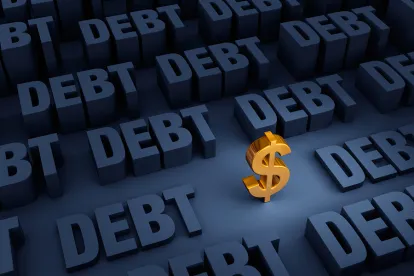As the world grapples with the health threat posed by the novel coronavirus (COVID-19), the secondary threats of the coronavirus—including economic and financial consequences—have come into clear view. Markets in the United States and the broader world tanked last week, including the worst day for the Dow Jones Industrial Average since “Black Monday,” October 19, 1987.[1] The Dow ended last week on an upswing,[2] but fell dramatically again yesterday[3] (though it is rebounding somewhat as of this morning).[4] Overall, the swift fall of both the Dow and the S&P 500 from all-time highs in February to bear territory this past week has raised concerns of a prolonged recession.[5]
The emergency rate cut by the Federal Reserve in early March received a lot of attention,[6] as did the resulting downward pressure on mortgage rates. Just over a week ago, the rate for a 30-year fixed mortgage had fallen all the way to 3.13%.[7] Yet, at the end of last week, the rate jumped back up to 3.65%.[8] Then at the beginning of this week, the Federal Reserve took even more drastic steps, cutting the benchmark interest rate all the way to zero and buying $700 billion of assets, including treasury bonds and agency residential-backed mortgage securities.[9] The whip-saw effect of this health crisis—on the one hand, creating downward pressure on interest rates, and on the other hand, chilling the real estate market by, among other things, causing potential buyers to avoid open houses—will remain worthy of close scrutiny.
The federal government’s decision to suspend interest payments on student loans held by federal agencies has also garnered a lot of attention.[10] Student loan debt bears some (though not all) of the hallmarks of the rampant residential mortgage debt that was intertwined with the last financial crisis.[11] It is certainly possible that the health and economic effects of the coronavirus could spur an increase in defaults of student loans, which could create ripple effects in the broader economy.
Many analysts, though, are currently focused not on mortgages or student loans, but instead on corporate debt bond rates, where the spread on yields has been dramatically widening in recent weeks.[12] The issuance of corporate bonds completely stopped at the end of February as the coronavirus threat grew: after collectively selling tens of billions of dollars of bonds month after month in recent years, no U.S. company sold new bonds during the last week of February.[13] Some bond investors at the moment cannot find buyers, in an echo of the liquidity crisis of 2008, as investors fled corporate bonds at record rates last Friday, March 13.[14]
The rapid growth—and possible over-extension—of the corporate bond market has been roughly a decade in the making in the United States. For the first time in the U.S. since 1991, business debt exceeds consumer debt.[15] A decade ago, the high-yield (that is, junk) corporate (non-bank) bond market amounted to only $786 billion; now, it amounts to $1.3 trillion.[16] The higher quality investment-grade U.S. corporate bond market amounted to less than $3 trillion a decade ago; now, it is $6 trillion.[17] The line between investment and junk is thin and might quickly start to blur in a downturn, as approximately half of the investment-grade debt is currently rated BBB, which is just one notch above junk levels.[18] On top of all of this debt is a $1.15 trillion leveraged loan market, much of which might be at greater risk because of the lack of typical covenants,[19] plus an $821 billion private (or “shadow”) credit market, which is often rated at B or below.[20]
Globally, the corporate bond trend is similar. For the first several years of this century, corporations issued an average of less than $1 trillion in bonds annually, but since 2008, they have issued about $1.8 trillion in bonds per year.[21] Global corporate bond debt now sits at $13 trillion.[22]
Factoring in every type of corporate debt—including not only the bonds but also debt owed to banks and all other creditors—global corporate debt sits now at a staggering $75 trillion, up from just $48 trillion at the end of 2009 and $32 trillion in 2005.[23] The International Monetary Fund issued a recent financial (in)stability report suggesting that, among eight major economies (including the U.S.) holding a total of $51 trillion in corporate debt, $19 trillion of this debt is at risk of default in the next downturn.[24] Like the U.S., much European corporate debt is graded BBB, with almost 40% of BBB debt maturing by the end of next year.[25]
Of course, not all corporate bonds and debt are at equal risk. In the face of the coronavirus, some businesses are clearly at greater peril than others. Energy companies find themselves caught in the middle of an oil price war between Saudi Arabia, Russia, and the United States, and many are expected to file for bankruptcy.[26] Meanwhile, travel companies are suffering from outright travel bans in addition to the fear of traveling due to the coronavirus.[27] Entertainment companies are suffering as well; for example, movie theater chains have seen forecasts drop precipitously.[28]
News about the coronavirus and its deleterious effects appears to change by the day, if not hour. But the looming threat of a corporate debt bubble has been growing for years, and the coronavirus might be the pin that pricks the bubble, with ruinous consequences for the broader economy.
[1] https://www.usatoday.com/story/money/2020/03/12/dow-plunges-trump-speech-fails-quell-coronavirus-fears/5029964002/.
[2] https://www.cnbc.com/2020/03/12/futures-stock-market-coronavirus-concerns.html.
[3] https://www.cnbc.com/2020/03/16/stock-market-today-live.html
[4] https://www.cnbc.com/2020/03/17/stock-market-today-live.html
[5] https://www.marketwatch.com/story/5-reasons-coronavirus-crushed-the-dow-and-left-global-financial-markets-broken-this-week-2020-03-13. A bear market is “commonly defined as a drop of 20% from a recent peak.”
[6] https://www.nytimes.com/2020/03/03/business/economy/fed-rate-cut.html
[7] https://www.cnbc.com/2020/03/13/mortgage-rates-jump-back-up-to-january-high-amid-coronavirus-outbreak.html
[8] https://www.cnbc.com/2020/03/13/mortgage-rates-jump-back-up-to-january-high-amid-coronavirus-outbreak.html
[9] https://www.cnbc.com/2020/03/15/federal-reserve-cuts-rates-to-zero-and-launches-massive-700-billion-quantitative-easing-program.html
[10] https://www.forbes.com/sites/zackfriedman/2020/03/13/student-loans-interest/#24bde3622ec8
[11] https://www.financialserviceswatchblog.com/2019/04/from-rmbs-to-slabs-is-history-repeating-itself/
[12] https://www.cnbc.com/2020/03/12/bonds-the-credit-markets-are-signaling-that-a-problem-is-afoot.html
[13] https://www.pbs.org/newshour/economy/staggering-corporate-debt-becomes-risk-as-virus-hits-economy
[14] https://www.pbs.org/newshour/economy/staggering-corporate-debt-becomes-risk-as-virus-hits-economy; https://www.cnn.com/2020/03/14/investing/corporate-debt-coronavirus/index.html.
[15] https://www.bloomberg.com/news/articles/2020-03-10/coronavirus-exposes-the-danger-of-corporate-america-s-debt-binge.
[16] https://www.bloomberg.com/news/articles/2020-03-10/coronavirus-exposes-the-danger-of-corporate-america-s-debt-binge.
[17] https://www.bloomberg.com/news/articles/2020-03-10/coronavirus-exposes-the-danger-of-corporate-america-s-debt-binge.
[18] https://www.bloomberg.com/news/articles/2020-03-10/coronavirus-exposes-the-danger-of-corporate-america-s-debt-binge (stating that nearly half of investment-grade debt is BBB); https://www.cnbc.com/2020/03/12/bonds-the-credit-markets-are-signaling-that-a-problem-is-afoot.html (stating that 52% of investment-grade debt, amounting to $2.67 trillion, is BBB).
[19] https://www.ft.com/content/7f80d354-311b-11e9-8744-e7016697f225
[20] https://www.bloomberg.com/news/articles/2020-03-10/coronavirus-exposes-the-danger-of-corporate-america-s-debt-binge; https://www.cnn.com/2020/03/14/investing/corporate-debt-coronavirus/index.html.
[21] https://www.nytimes.com/2020/03/11/business/coronavirus-corporate-debt.html
[22] https://time.com/5801593/coronavirus-bond-market/
[23] https://www.cnn.com/2020/03/14/investing/corporate-debt-coronavirus/index.html; https://time.com/5801593/coronavirus-bond-market/
[24] https://www.cnn.com/2020/03/14/investing/corporate-debt-coronavirus/index.html; https://www.imf.org/en/News/Articles/2019/10/16/tr101619-transcript-of-press-conference-on-release-of-october-2019-global-financial-stability-report
[25] https://www.ft.com/content/4455735a-63bc-11ea-b3f3-fe4680ea68b5
[26] https://www.pbs.org/newshour/economy/staggering-corporate-debt-becomes-risk-as-virus-hits-economy
[27] https://www.pbs.org/newshour/economy/staggering-corporate-debt-becomes-risk-as-virus-hits-economy
[28] https://www.ft.com/content/4455735a-63bc-11ea-b3f3-fe4680ea68b5





 />i
/>i

